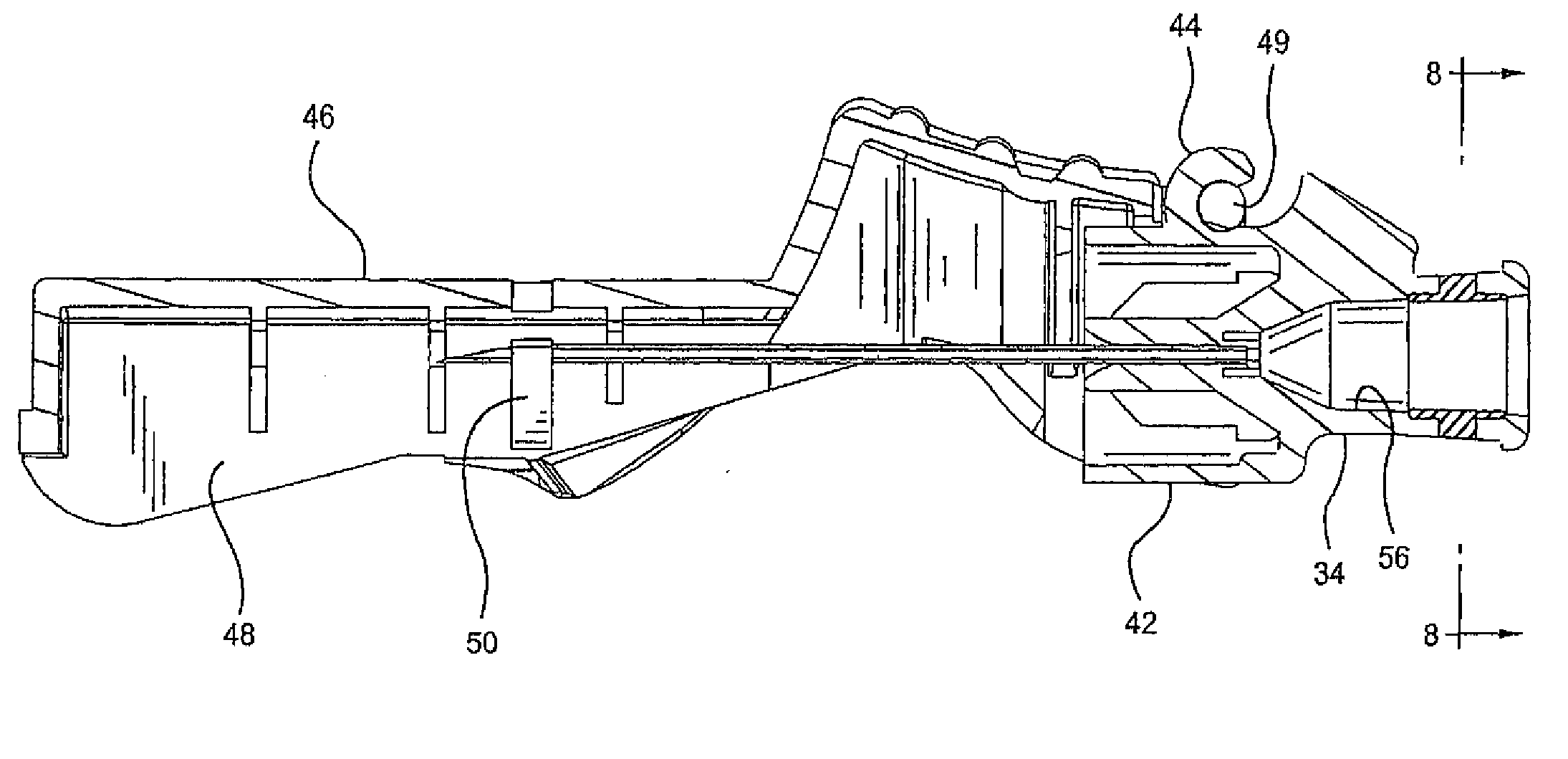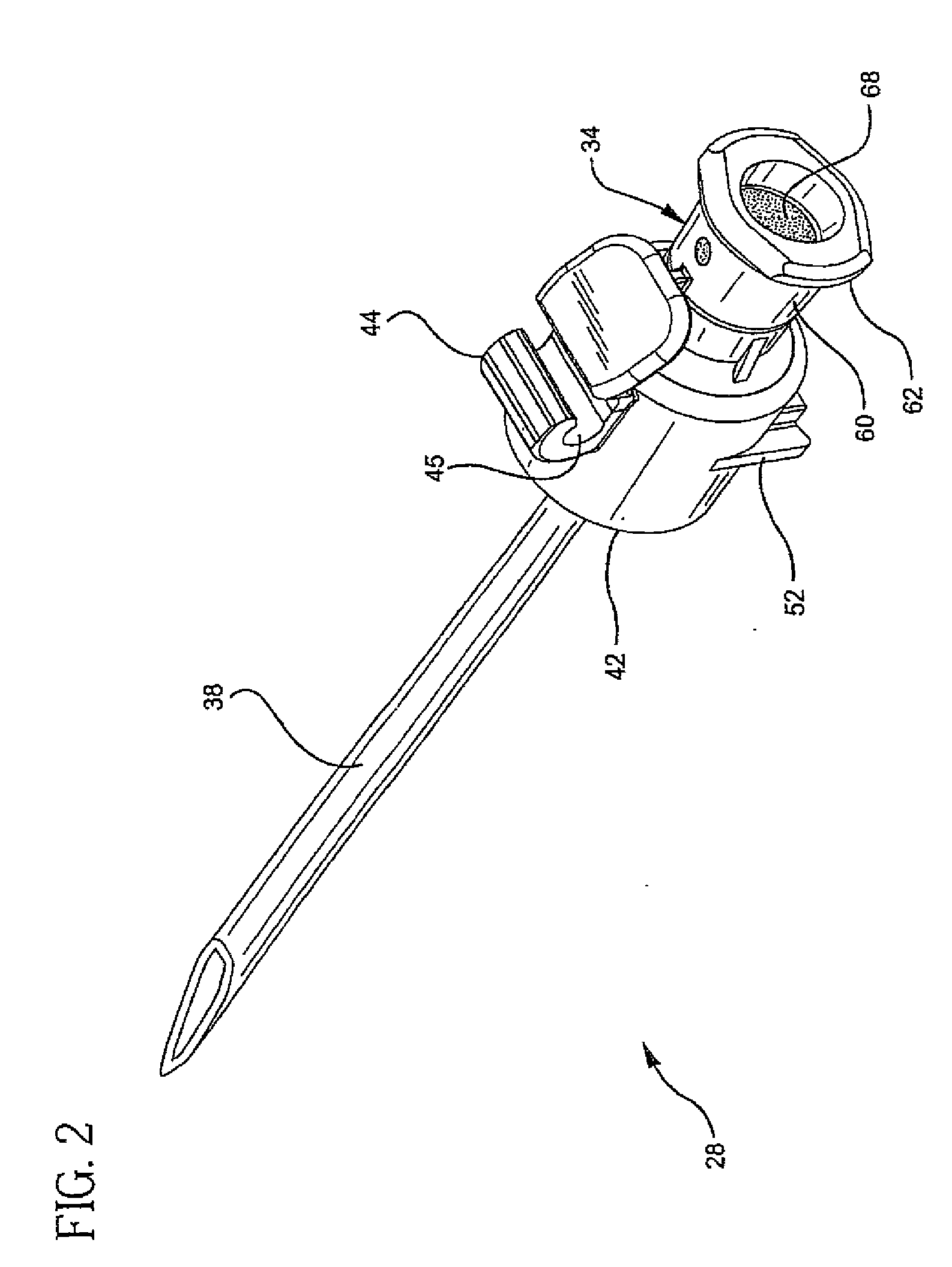Luer Connector Assembly
a technology of connectors and connector parts, applied in the direction of hose connections, infusion syringes, catheters, etc., can solve the problems of impracticality of disposable syringe assemblies, potential contamination of fluids, loss of medication, blood or other fluids, etc., to enhance frictional interference fit, secure connection, and reliable couple the needle hub
- Summary
- Abstract
- Description
- Claims
- Application Information
AI Technical Summary
Benefits of technology
Problems solved by technology
Method used
Image
Examples
first embodiment
[0047]the invention will be described with respect to FIGS. 1-10. FIGS. 1-3 show a hypodermic needle assembly 28 according to the invention, while FIGS. 4-6 show the assembly as coupled to a syringe. The syringe includes a barrel 20 that comprises an elongate chamber 22 for retaining fluids. A tip 24 extends from the distal end of the barrel. The tip 24 includes a passageway 26 for communicating with the chamber 22, as shown in FIG. 6. The tip 24 is used to connect the syringe to the hypodermic needle assembly 28, though it could also be used to engage other fluid transfer apparatus. It will further be appreciated that the present invention is applicable to the engagement of other types of medical devices having connector assemblies comprised of tips and hub portions mounted over the tips. Some evacuated tube holders, for example, have tips for accepting needle assemblies or tubing.
[0048]The syringe tip 24 is preferably frusto-conically shaped, having a smaller outside diameter at i...
PUM
 Login to View More
Login to View More Abstract
Description
Claims
Application Information
 Login to View More
Login to View More - R&D
- Intellectual Property
- Life Sciences
- Materials
- Tech Scout
- Unparalleled Data Quality
- Higher Quality Content
- 60% Fewer Hallucinations
Browse by: Latest US Patents, China's latest patents, Technical Efficacy Thesaurus, Application Domain, Technology Topic, Popular Technical Reports.
© 2025 PatSnap. All rights reserved.Legal|Privacy policy|Modern Slavery Act Transparency Statement|Sitemap|About US| Contact US: help@patsnap.com



